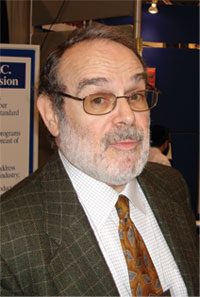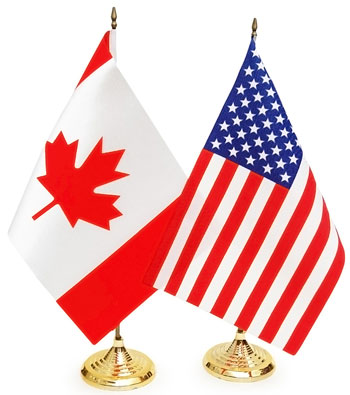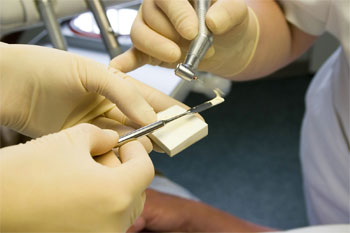
Bernie Teitelbaum is executive director of the Dental Industry Association of Canada (DIAC). In this JCDA interview, Mr. Teitelbaum addresses the many factors that can affect the price of dental equipment and materials in Canada, including the illicit “grey market” trade.
JCDA: Many dentists in Canada believe they are paying their Canadian dealers more than they should be for dental equipment and materials. Why are there different prices for products in Canada, the United States and other world markets?
Bernie Teitelbaum (BT): There are often good reasons for price differences and many are not simply based on foreign currency exchange rates. However, the reasons can differ from company to company, product to product and market to market. It is difficult to generalize about something that each company in each market treats differently.
JCDA: Can you give our readers some reasons that might help to explain these price differences?
BT: I believe we can understand the issue better if we separate the wealthier nations from the developing world.
For instance in the U.S., where most of our products are manufactured, you would expect the major price difference to be a result of exchange rates. However, there are several caveats here. Canada is a secondary market for U.S. manufacturers. Instead of absorbing the additional costs that go with servicing the Canadian market into their domestic market prices (such as bilingual labelling requirements), some manufacturers pass these costs on to their Canadian customers.
As for exchange rates, manufacturers who ship directly to Canadian dealers don’t manage exchange rates. The dealers manage the exchange rate, often on a daily basis (for equipment) or on a competitive basis (for sundries) because they are buying in U.S. dollars.
In cases where manufacturers have Canadian facilities, they manage the exchange rate themselves, but only periodically. The entire supply chain—from the manufacturer to the dealer to the dealer branch to the customer—would not function with any certainty or efficiency if manufacturers had to change their price lists with every move in the Canadian or U.S. dollar. But they are trying harder to be flexible and I believe they are getting substantially better.

JCDA: If prices from Canadian dealers are not just dependent on exchange rates, what other factors can affect the price of products?
BT: There are other differences between Canadian and U.S. dealers that might make products a bit more expensive in Canada.
One of the main reasons is economy of scale. In the U.S., a dealer in New York or California can operate in a market as large as all of Canada with only a few stores and a sales force that never has to spend a night away from home.
Even the national dealers have greater economies of scale. For example, the largest dealer in Canada has 6 distribution centres in the U.S. In Canada, the same dealer has 4—for one-tenth the market that is spread out over a country 8000 kilometres east to west and 800 kilometres north to south! Distribution costs are substantially higher for doing business in Canada, so pricing flexibility for dealers is much lower. If your expense ratios are higher, then it follows that your discounts are going to be lower.
JCDA: If manufacturers who ship to subsidiaries in Canada have a difficult time managing exchange rates, why would they choose to have a location in Canada?
BT: They ask themselves that question all the time. Manufacturers who set up a physical operation in Canada do so primarily for customer service purposes. They want a Canadian-based inventory, Canadian management that is sensitive to the Canadian market, Canadian regulatory expertise and stronger ties with dental schools, regulators and professional associations, among other factors. They believe strongly that this presence provides added value to their customers.
These companies realize that they are duplicating some costs from their U.S. operations and this gives them less pricing flexibility than their U.S. parent company. Price-wise, the manufacturers and the multinational dealers would both be better off if they simply shipped directly to Canadian dentists from the U.S. But if everybody did that, Canadian dentists would be severely underserved relative to their American counterparts.
JCDA: Some dentists claim they can purchase goods for up to 50% less than they currently have to pay in Canada. How is this possible?
BT: Indeed, there might be products available in Canada for 50% off the Canadian suggested retail price and I wouldn’t be surprised if you could find even higher discounts than that! However, these products have either been redirected from developing countries, or could be counterfeit or stolen goods.

JCDA: How do these “grey market” products make their way into Canada?
BT: The products coming into Canada from the U.S. are from dealers who are violating their territory agreement with the manufacturer. Some of these products are being shipped directly to Canadian dentists and some are going through Canadian dealers or brokers. Product supply and support is not guaranteed because the Canadian dealer has no direct access to the manufacturer and there is no guarantee that the product is actually licensed for sale in Canada, or actually coming directly from the U.S.
The grey market products coming from developing countries are likely being redirected either by the regional wholesaler or the national dealer. These goods often don’t leave the dock at the port of arrival. The person redirecting the product merely advises their grey market broker that the goods have arrived and the broker sends the product list to their network of dealers who then bid on the quantities they want.
The diverter then advises a shipping agent to reroute the goods. When they get to Canada, the goods are sometimes split up again among several grey market dealers. In the end, nobody really knows how many hands they went through, or anything about the shipping, storage and handling conditions. So if there is ever a product recall, there is no way for a dentist to confirm the source of the product.
JCDA: Why are products sourced in developing markets so much cheaper than they are in Canada?
BT: Dentists in these developing markets can’t afford the same prices that we pay in North America. Even at the lower prices, a dentist in some of these countries will still pay as much as 50% of their gross income for dental supplies. That compares to the roughly 8% of gross for Canadian dentists.
Manufacturers know that some of these countries are some of the fastest growing markets in the world and they are trying to establish their brands with substantial price subsidization now, in the hope that the growing middle classes will be able to afford a higher price later.
They also sell their products differently in those markets. There are no local offices and neither the manufacturers nor the dealers have a lot of representatives supporting the product. Generally, sales are made in bulk to regional distributors, who sell to national and local dealers, who then sell to dentists. The distributors and dealers don’t have large support staffs, same-day delivery, office design studios or service department support. Labour costs are substantially lower in these countries, so everybody, including the dentist, can afford to work on lower prices without sacrificing too much margin.
JCDA: Why shouldn’t Canadian dentists take advantage of these price differentials if they can find them?
BT: From a legal point of view, in order to protect the public from potentially harmful products, it is illegal for anybody to import or sell medical devices and drugs that have not been licensed by Health Canada, or to sell them without a Health Canada Establishment Licence. Health Canada has gone to some lengths to advertise this, but the message has not been universally received.
Dentists have to evaluate the potential opportunities as well as any risks that grey market products may pose to their patients’ health.
JCDA: What are the risks of using these products?
BT: I am not a dental materials expert, so I would invite you to consult with those who are. However, it is my understanding that most dental materials have 2 chemical compounds: a base and a catalyst. The chemical reaction created by mixing these 2 compounds can be affected by the conditions under which they are shipped, handled and stored. If you don’t know where your product comes from and therefore how it was shipped, stored and handled, then it is very likely to be suspect.
That is the position of Health Canada, and we support this view because our members spend a lot of money making sure that their products and establishments comply.
Also, a lot of imported equipment is not CSA (or equivalent) approved. That puts a dental practice in jeopardy of breaching the conditions of its property and casualty insurance.
JCDA: Some dentists who have purchased these grey market products claim that they work just fine. Would you care to comment?
BT: In any single case, they may be right. There is no guarantee that these products will not work as directed. However, there is also no guarantee that they will work properly, and more importantly, there is no fallback to a licensed distribution system to protect the dentist from liability.

JCDA: How do we know that any problems with grey market products really exist?
BT: We find out when a dentist calls to complain that a product doesn’t work, or that half a dozen patient recalls were necessary because fillings fell out or crowns fell off!
Manufacturers often go to these dental offices to follow up and find that the product has been sold in zip-lock bags, or that lot numbers have been scratched out or that the product is simply counterfeit. We believe there are over 50 grey market dealers in Canada so nothing surprises us anymore.
JCDA: If a dentist can buy products cheaper from sources in other countries, then manufacturers lose the additional profit they can make at Canadian prices. Isn’t that what companies are most worried about?
BT: For every dentist that officially lodges a complaint about the quality of a product, there are likely 10 who don’t complain. If the product doesn’t work, they will just throw it in the garbage and resolve never to use it again. That’s the real cost to the manufacturer—the loss of their product’s reputation if a dentist tells colleagues that a particular product is faulty.
JCDA: It seems that most of the problems with the grey market can be controlled by the manufacturer. What are they doing about it?
BT: I will give you some of the solutions and how product diverters are getting around them.
Manufacturers are cutting off dealers and distributors who they find diverting product outside of their contracted territory, and firing any of their own employees who are discovered to be facilitating the trade. They also use country-specific lot numbers to detect this practice. As a result, the diverters are repackaging and scratching out the lot numbers on the contents. That way the shipment can’t be traced or recalled either, because recalls are generally organized by lot number.
Manufacturers also designate shipping agents and carriers to make sure that products actually arrive at the intended destination without being rerouted. However, shipping costs are relatively inexpensive, which means there is no impediment to shipping these products back to North America.
Manufacturers are also re-branding their products for emerging markets. In some cases, they might change the product name. In other cases, they are now starting to sell different products in emerging markets, but charging the same price as they do in North America for the original branded products. This is too bad, because it places many new technologies outside the reach of dentists in emerging markets.

Some of these actions by manufacturers might be creating a higher number of counterfeit goods. The trade in dental products is sufficiently profitable that the diverters are now trying to make the products themselves, often very poorly. This could lead to serious complications in restorations and the underlying anatomy.
JCDA: Has Health Canada specifically addressed the issue of grey market products?
BT: We are trying to work with Health Canada on this issue. One problem is that Health Canada’s current regulatory regime only calls for the inspection of those facilities that have an Establishment Licence or for which they receive a trade complaint. At the current rate of inspection, it would take Health Canada over 6 years just to inspect all existing licences. If they do find someone operating without a licence, or with a licence but selling unlicensed product, the current fine is only $500. [Ed. note: there is legislation currently under review that would increase this fine to 6 figures.]
So the companies trying to operate within the law are paying $2120 per year for their licence ($12 720 for the 6-year inspection cycle), and they are also incurring the additional regulatory costs of complying with the terms of the licence. In effect, these companies are subsidizing the grey market dealers because these regulatory costs have to be included in our prices.
JCDA: What are the main messages you would like dentists to take away from this interview?
BT: There is nothing wrong with buying products on special promotion or shopping around among licensed and reputable dealers and manufacturers. We are not asking dentists to “take it on the chin” in terms of finding competitive prices. We fully understand that cost management is an important part of running any business.
However, we would just ask that dentists deal with reputable suppliers and dealers and therefore not compromise the health of their patients or their professional standing.
Have you been the victim of a faulty product?
If you've had a negative experience with a dodgy dealer or a counterfeit product, contact Bernie Teitelbaum to share your story at bernie@diac.ca.
Related Resources
Toronto Academy of Dentistry Winter Clinic Panel Discussion on Grey Market and Counterfeit Dental Materials [conference report]. J Can Dent Assoc. 2008;74(3):233-5. Available: www.cda-adc.ca/jcda/vol-74/issue-3/233.pdf
Complementary audio presentations: www.cda-adc.ca/en/cda/news_events/media/dentistry_news/2008/02_21_08.asp
